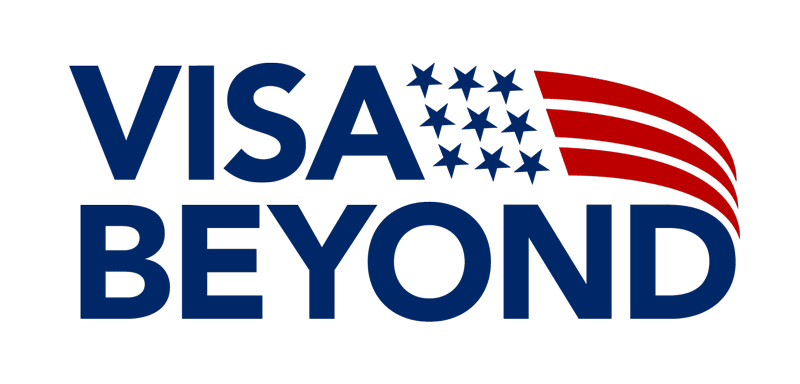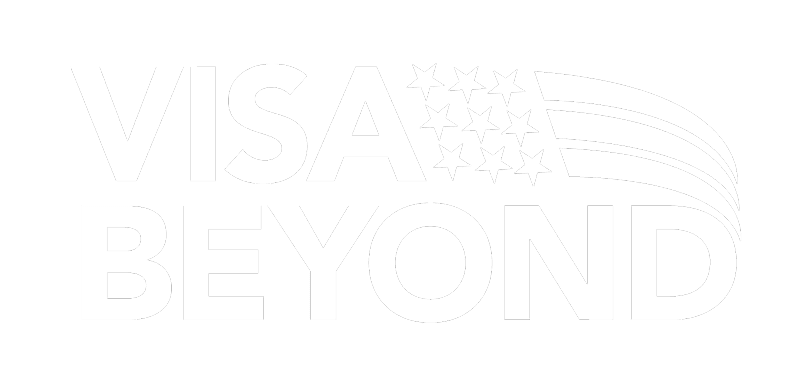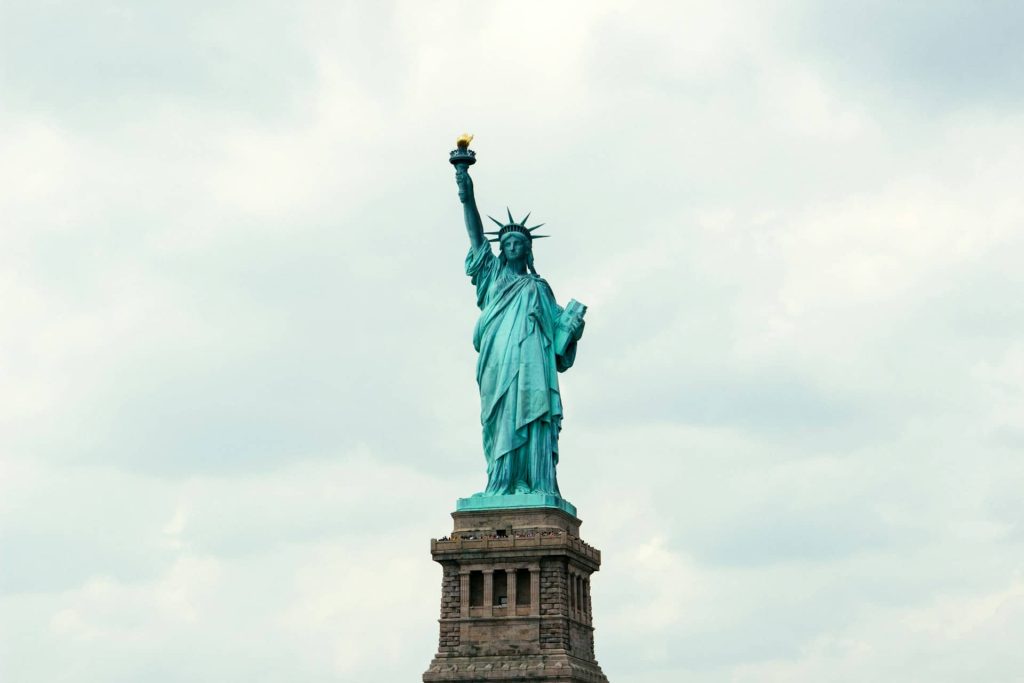O-1 Visa :
A Visa for
Extraordinary Abilities.
The O-1 visa offers a fast track to U.S. residency for individuals with extraordinary abilities in their field.
O-1 visa allows dual intent, meaning you can pursue a U.S. green card while on this visa. This flexibility makes it easier for extraordinary individuals to transition to permanent residency.
Elite Talent
For those with top-tier
skills in their field
Unlimited Visas
No yearly cap,
unlike other visas.
Family Access
Dependents can live
and study in the U.S.
Path to Green Card
Easily transition to
permanent residency.
Job Flexibility
Easily switch employers
with a new petition.
designers and
developers
awards for digital
innovation
Understanding
the O-1 Visa
The O-1 visa is a non-immigrant visa designed for individuals who demonstrate extraordinary ability in their field of expertise, whether it’s in the arts, sciences, business, athletics, or education. This visa is highly sought after due to its unique benefits, including the potential pathway to U.S. residency and a green card. Unlike other work visas, the O-1 visa does not have a cap on the number of visas issued annually, making it an attractive option for qualified individuals.
What is the O-1 Visa? A Breakdown of Eligibility and Benefits
The O-1 visa is specifically tailored for individuals with extraordinary abilities or achievements in specific fields. To qualify, applicants must provide evidence of sustained national or international acclaim and recognition in their field. The O-1 visa offers numerous benefits, such as the ability to live and work in the U.S. while pursuing professional opportunities in your area of expertise. Additionally, the visa allows for unlimited extensions as long as the individual continues to meet the eligibility criteria.
O-1A vs. O-1B: Which O-1 Visa Category is Right for You?
The O-1 visa is divided into two categories: O-1A and O-1B, each catering to different professional fields.
- O-1A is for individuals with extraordinary ability in sciences, education, business, or athletics.
- O-1B is for those with extraordinary ability in the arts or extraordinary achievement in the motion picture or television industry.
Understanding the distinctions between these categories is crucial to determine which one aligns with your qualifications and professional background.
Benefits of the O-1 Visa: Why Choose O-1 Over Other U.S. Work Visas?
The O-1 visa offers several advantages over other U.S. work visas. Key benefits include:
- No annual cap: Unlike the H-1B visa, there is no annual limit on the number of O-1 visas issued, allowing qualified individuals to apply year-round.
- Longer stay duration: The O-1 visa is initially granted for up to three years, with the possibility of unlimited extensions.
- Flexibility: The O-1 visa allows you to work for multiple employers in the U.S. as long as they are listed on your visa petition.
Pathway to residency: The O-1 visa can serve as a stepping stone to obtaining a green card, particularly through the EB-1 visa category.
How Long Can You Stay on an O-1 Visa?
An O-1 visa is initially granted for up to three years, depending on the length of time needed to complete the event or activity for which the visa was granted. After this period, the visa can be extended in one-year increments for as long as the individual continues to work in their area of extraordinary ability. This flexibility allows O-1 visa holders to remain in the U.S. for extended periods, making it an appealing option for those seeking long-term opportunities in their field.
O-1 Visa Success Rate.
The success rate for O-1 visas, particularly the O-1A and O-1B, tends to be high compared to other visa types.
00%
Depending on the
applicant’s field
O1 Visa Application Costs and Processing Timeline
An overview of fees and processing times for applying to the EB3 Visa program, designed for skilled workers, professionals, and unskilled workers.
Application Fees
- Form I-129 Filing Fee: $460
- Visa Application Fee: $160
- Premium Processing Fee: $2,500
Application Timeline
- Standard Processing: 2 to 4 months for Form I-129
- Premium Processing: 15 days for Form I-129
FAQs
About O1 Visa.
What Kind of Evidence is Required for an O-1 Visa?
Applicants must provide proof of extraordinary achievements, such as major awards, published work, or significant contributions in their field.
Can O-1 Visa Holders Work for Multiple Employers?
Yes, but each employer must file a separate petition or the petition must list all employers.
How Do O-1 Visa Holders Pay Taxes in the U.S.?
O-1 Visa holders are subject to U.S. tax laws and must file taxes based on their residency status and income earned in the U.S.
Clients we
work for.
















Visa Requirements
The O-1 visa is designed for individuals who possess extraordinary ability in their field, but the application process is rigorous, requiring both the applicant and employer to meet specific criteria. Understanding these requirements is essential for a successful visa petition. Applicants must demonstrate sustained national or international acclaim, while employers need to provide substantial documentation supporting the candidate’s qualifications and the nature of the employment in the U.S.
O-1 Visa Eligibility
To qualify for the O-1 visa, an applicant must show that they have reached a level of expertise that is far above what is ordinarily encountered. This involves demonstrating “extraordinary ability,” which means being among the small percentage of individuals who have risen to the very top of their field. Both the applicant and the employer must meet specific criteria. Applicants must demonstrate sustained national or international acclaim in their field, while employers must provide a detailed job offer and support the petition with necessary documentation.
What is Considered Extraordinary Ability for O-1 Visa?
Extraordinary ability for the O-1 visa is defined as a level of expertise indicating that the individual is among the small percentage who have risen to the very top of their field of endeavor. This is often demonstrated through a combination of awards, memberships, publications, and peer recognition. The key is to show that your contributions are both significant and recognized by experts in your field.
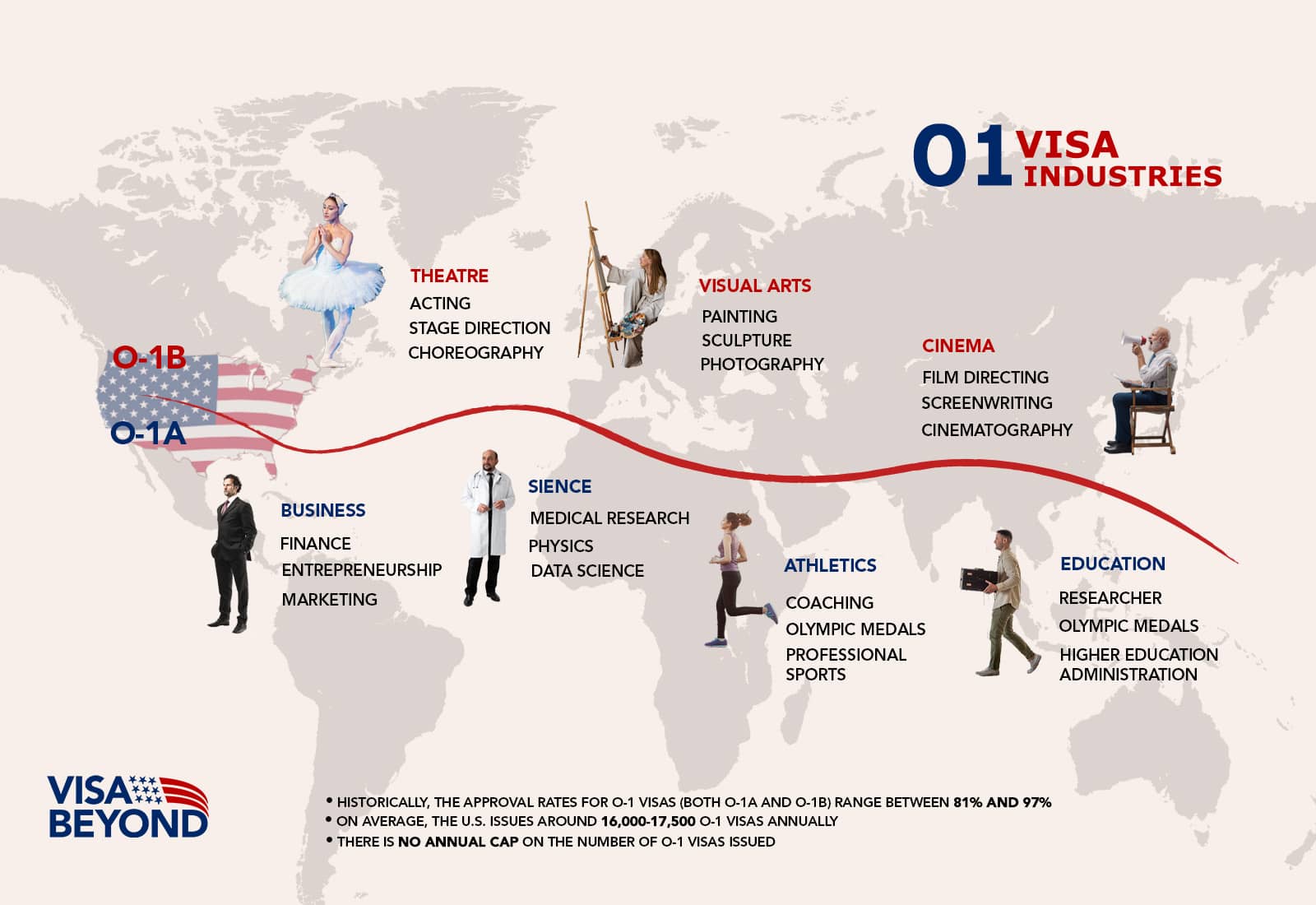
Who Qualifies for the O-1A Visa?
To qualify for the O-1A Visa, applicants must demonstrate extraordinary ability in the sciences, education, business, or athletics. This can be evidenced by receiving a major internationally recognized award (e.g., Nobel Prize) or by meeting at least three of the following criteria:
- Receipt of nationally or internationally recognized prizes or awards.
- Membership in associations requiring outstanding achievements.
- Published material about the applicant in professional or major trade publications.
- Participation on a panel or as a judge of the work of others in the field.
- Original scientific, scholarly, or business-related contributions of major significance.
- Authorship of scholarly articles in professional journals or other major media.
- Employment in a critical or essential capacity for organizations with a distinguished reputation.
- High salary or other remuneration in relation to others in the field.
Who is Eligible for the O-1B Visa?
The O-1B Visa is for individuals with extraordinary ability in the arts or extraordinary achievement in the motion picture or television industry. Eligibility can be demonstrated by receiving a significant national or international award (e.g., Academy Award, Emmy) or by meeting at least three of the following criteria:
- Performance as a lead or starring participant in productions/events with distinguished reputations.
- National or international recognition for achievements.
- Performance in a leading, starring, or critical role for organizations and establishments with a distinguished reputation.
- Record of major commercial or critically acclaimed successes.
- Significant recognition from organizations, critics, government agencies, or other recognized experts.
- High salary or substantial remuneration for services in relation to others.
Employer Requirements for Sponsoring an O-1 Visa
Employers play a crucial role in the O-1 visa process. They must provide a job offer or contract outlining the applicant’s role, responsibilities, and the extraordinary abilities required for the position. Employers also need to demonstrate that the position offered is aligned with the applicant’s field of expertise and that they are uniquely qualified to fill it.
Understanding the Job Offer and Contract Requirements
The job offer or contract is a fundamental part of the O-1 visa petition. It must clearly outline the terms of employment, including duties, salary, and the duration of the position. The offer should also reflect that the job requires the extraordinary ability that the applicant possesses, further supporting their eligibility for the O-1 visa. Ensuring that the contract details align with the visa requirements can be crucial to the petition’s success.
How to Apply for the O-1 Visa
Applying for an O-1 visa involves a multi-step process that requires careful preparation and attention to detail. The process begins with gathering necessary documentation, followed by filing the petition with U.S. Citizenship and Immigration Services (USCIS). Here’s a step-by-step guide to help you navigate the application process successfully.
O-1 Visa Application Process
Employers play a crucial role in the visa application process. They must submit a petition on behalf of the applicant, demonstrating that the role being offered requires someone with extraordinary ability. Employers need to provide a job offer, a detailed job description, and evidence that the applicant meets the O-1 visa criteria.
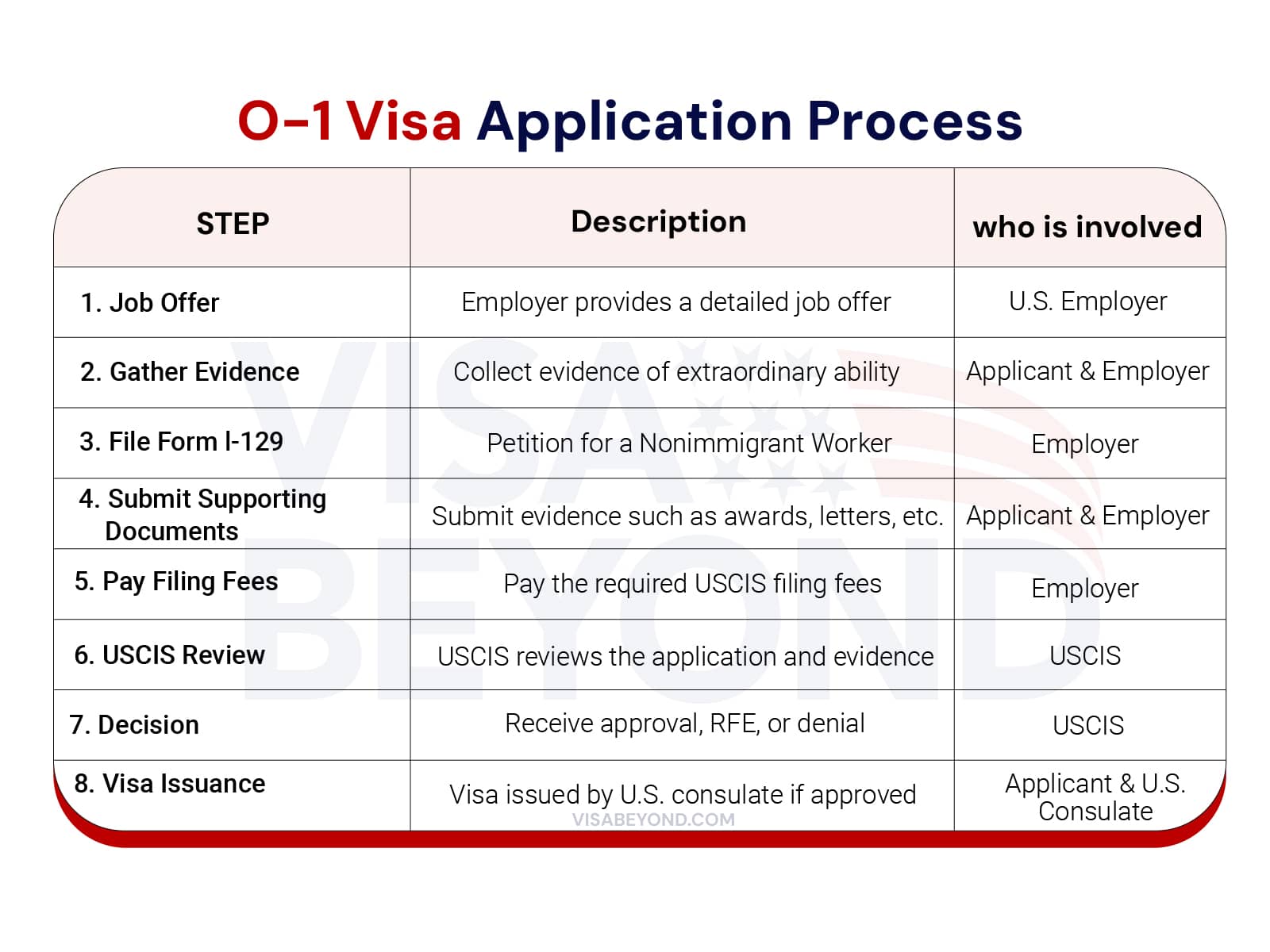
Filing Form I-129: Petition for a Nonimmigrant Worker
Form I-129 is the central document in the O1 visa application. This petition is filed by the employer and must include comprehensive evidence of the applicant’s extraordinary ability. The form requires details about the employer, the job offer, and the applicant’s qualifications. Accuracy and completeness are essential to avoid delays or denials.
Form I-129 Checklist: Required Documents and Information
When filing Form I-129, make sure to include the following key documents:
Copy of the Employment Contract :
Ensure the contract outlines the terms of employment.
Proof of Applicant's Extraordinary Ability :
Provide evidence such as published work, significant contributions, or high-profile achievements.
Letters of Recommendation :
Include letters from recognized experts in the field attesting to the applicant’s qualifications.
Documentation of Awards or Recognitions :
Submit evidence of any awards, honors, or recognitions that demonstrate extraordinary ability.
O-1 Visa Filing Fees and Processing Times
The visa application involves various fees, including the Form I-129 filing fee and any fees associated with premium processing. Processing times can vary, but standard processing typically takes several months. Employers can opt for premium processing to expedite the decision within 15 days.
O-1 Visa Documentation
Proper documentation is the backbone of a successful visa application. This includes proof of extraordinary ability, such as awards, publications, and letters of recommendation, as well as a detailed job offer. The more thorough and organized your documentation, the stronger your petition will be.
Gathering Strong Evidence for Your O-1 Visa Petition
Evidence of extraordinary ability is crucial for the O1 visa. This can include major awards, scholarly articles, or significant contributions to your field. Strong evidence must be specific, verifiable, and clearly demonstrate why the applicant is among the top in their field.
How to Write a Winning O-1 Visa Recommendation Letter
Recommendation letters are a key component of the visa petition. These letters should come from recognized experts in your field and should detail your achievements, contributions, and why you are considered to have extraordinary ability. A well-crafted letter can significantly enhance your application.
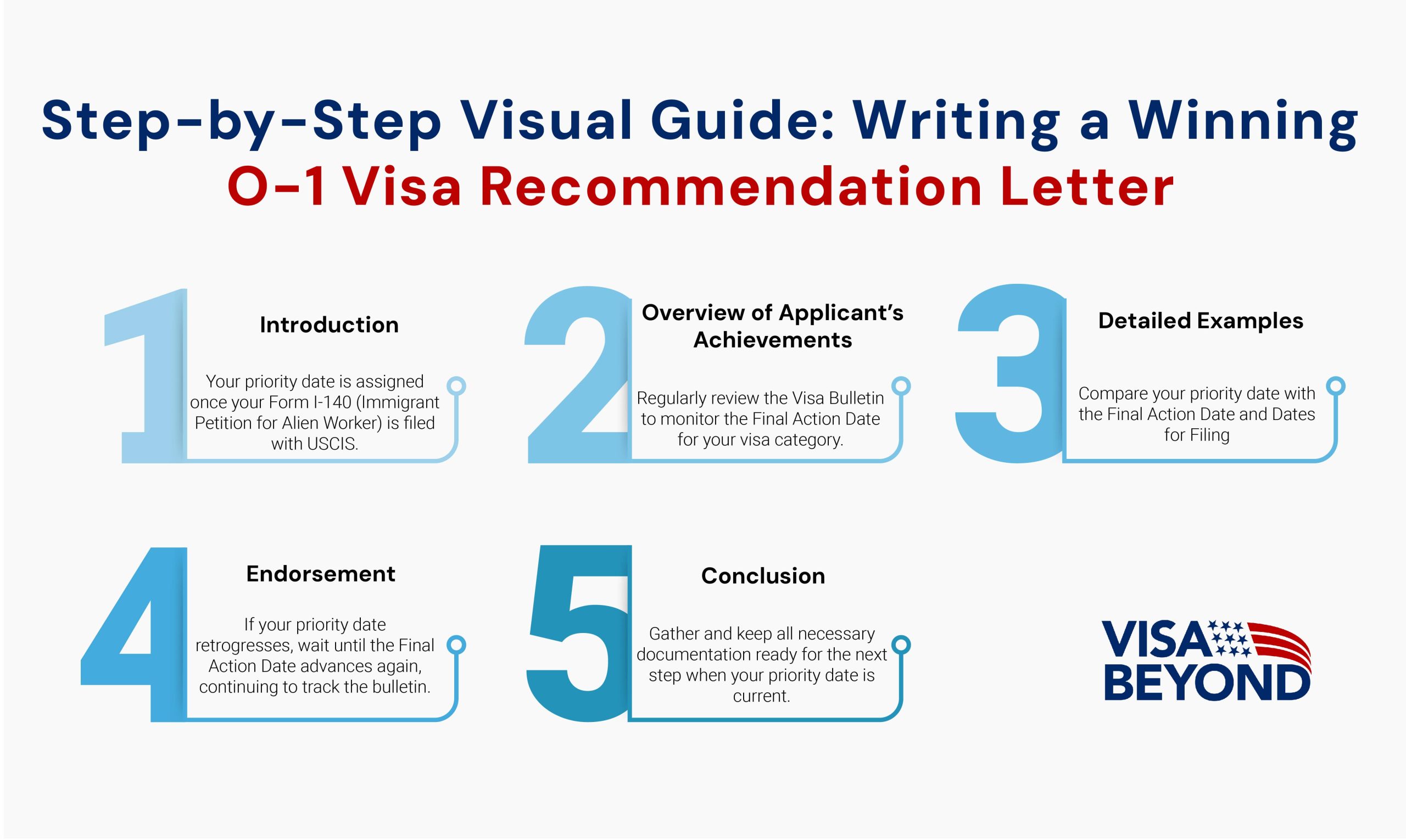
How Long Does It Take to Get an O-1 Visa?
The processing time for the visa can vary depending on several factors, including the completeness of the application and whether premium processing is used. Typically, standard processing takes a few months, but this can be shortened to 15 days with premium processing.
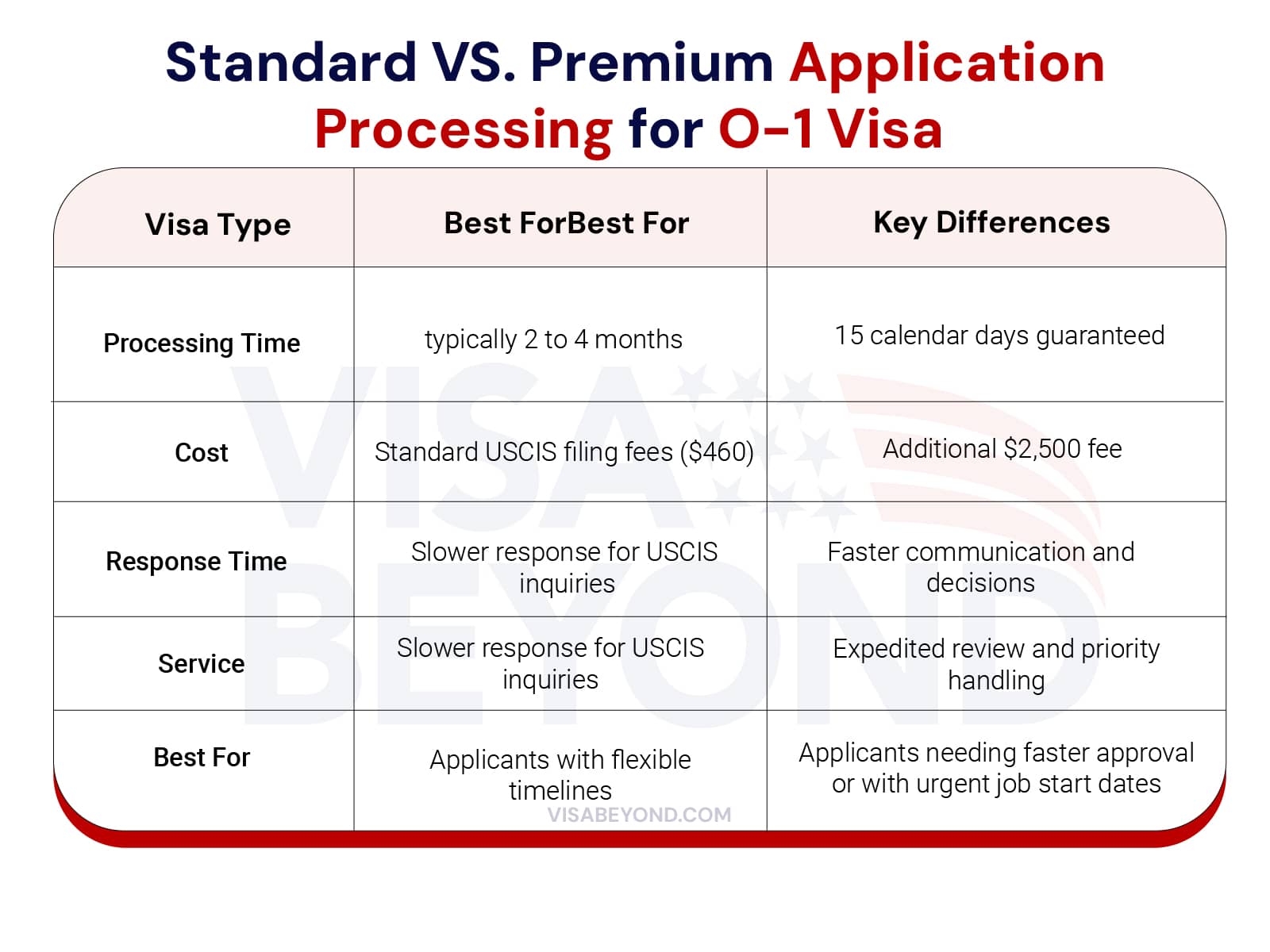
Standard Processing for O-1 Visa: What to Expect
With standard processing, applicants can expect their O1 visa petition to be reviewed within several months. During this time, USCIS may request additional evidence or clarification, which could extend the processing period. Being prepared for potential delays is important.
Premium Processing: Expediting Your O-1 Visa Application
Premium processing is an option for those who need a faster decision on their O-1 visa application. For an additional fee, USCIS guarantees a response within 15 days, making it a valuable option for applicants with tight timelines. However, premium processing does not guarantee approval.
O-1 Visa Validity, Extensions, and Renewals
The O-1 visa is initially granted for up to three years, with the possibility of extensions. Understanding the validity period, how to apply for extensions, and the renewal process is crucial for maintaining your status and continuing your work in the U.S.
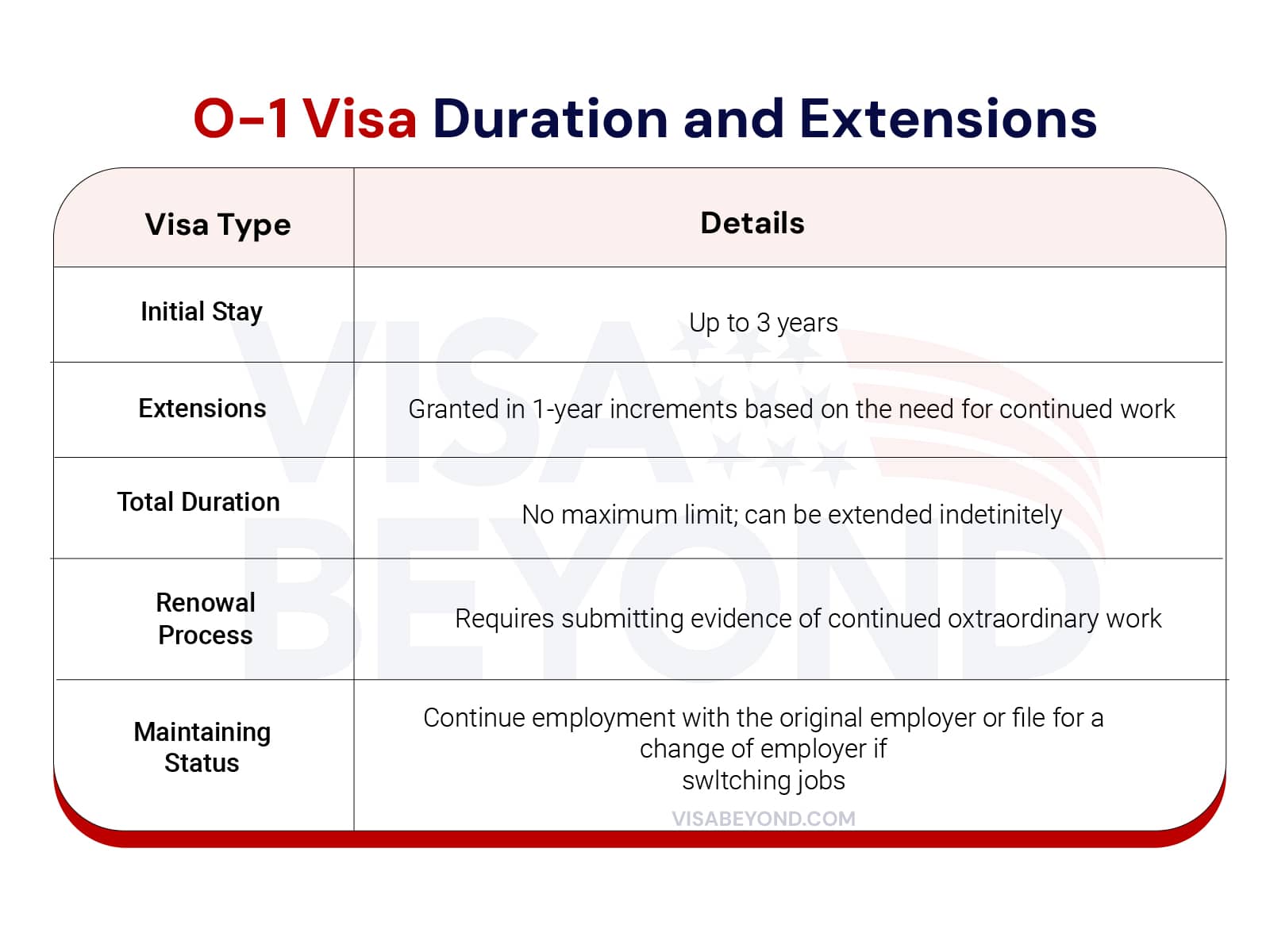
How Long is an O-1 Visa Valid For?
An O1 visa is typically valid for an initial period of up to three years. However, this can vary depending on the nature of the employment. Extensions can be granted in one-year increments, provided the applicant continues to meet the visa requirements.
Renewing Your O-1 Visa
Renewing your visa requires submitting a new Form I-129, along with updated documentation proving continued extraordinary ability and employment in your field. It’s important to begin the renewal process well before your current visa expires to avoid any gaps in status.
Key Deadlines and Procedures for O-1 Visa Renewal
The renewal process involves adhering to strict deadlines, including submitting the petition before the current visa expires. Failure to meet these deadlines can result in a lapse in visa status, which could affect your ability to remain in the U.S.
Maximizing Your Stay
To maintain visa status, you must continue to work in your field of extraordinary ability and comply with all visa conditions. Regularly updating your documentation and staying informed about any changes in visa requirements can help maximize your stay in the U.S.
O-1 Visa Extension Process
To be eligible for an O1 visa extension, you must continue to demonstrate extraordinary ability and provide evidence of ongoing employment in your field. The extension process is similar to the initial application but focuses on proving that you still meet the visa criteria.
Steps for a Successful O-1 Visa Renewal
A successful visa renewal involves careful preparation, including gathering updated evidence of your achievements, obtaining new recommendation letters, and ensuring that your employment offer remains valid. Following these steps can help ensure that your renewal is approved without delays.
O-1 Visa Employment and Change of Status
Navigating employment and changes in status while on an O-1 visa can be complex. Understanding the rules, procedures, and your options is crucial to maintaining your visa status and planning your career path in the U.S. Here’s what you need to know.
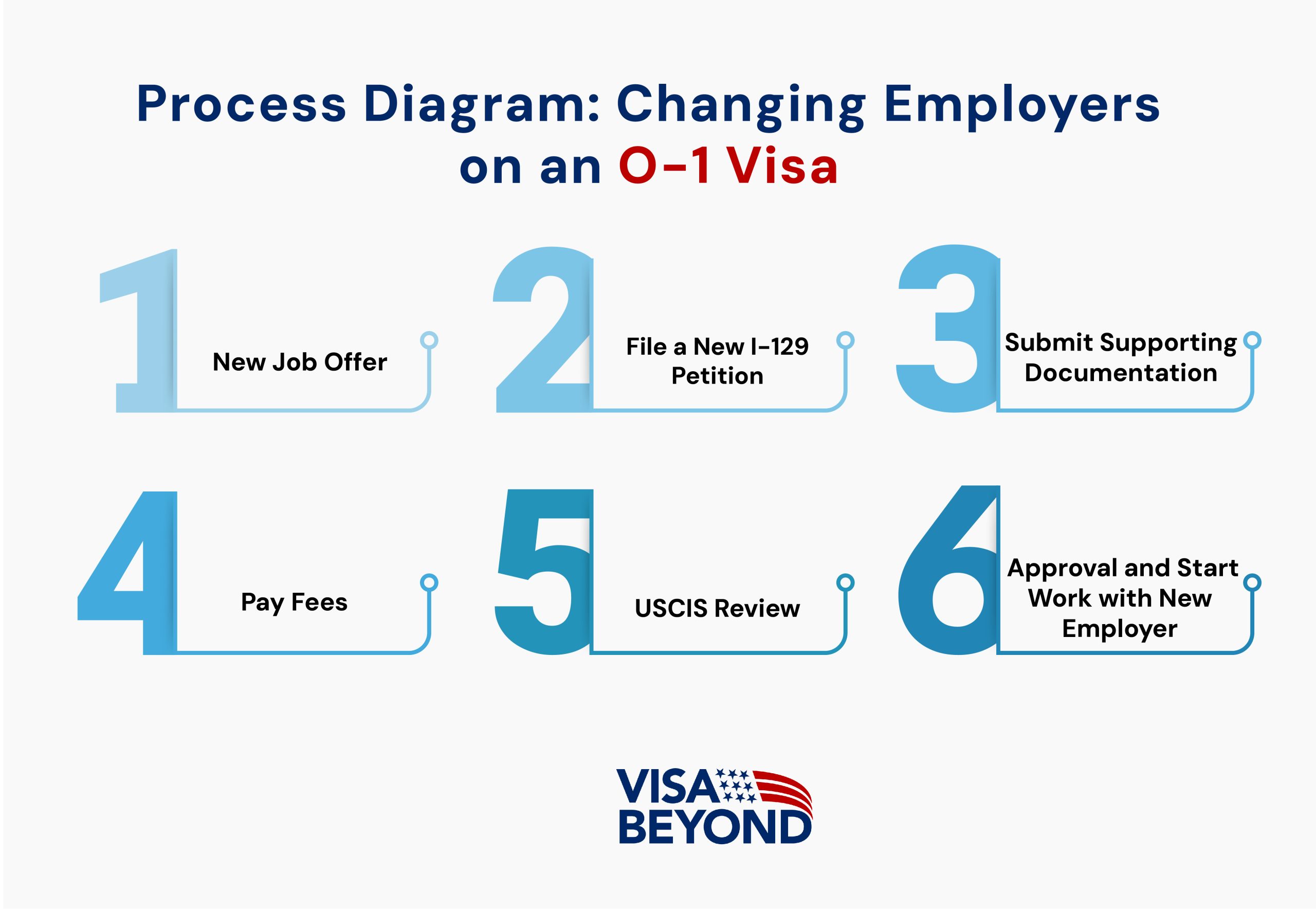
Can You Change Employers on an O-1 Visa?
Yes, you can change employers on an O-1 visa, but the process involves specific rules and procedures. Any change in employment requires filing a new petition with USCIS, ensuring that the new position still qualifies under the extraordinary ability category.
How to Change Employers on an O-1 Visa
To change employers, your new employer must file a new Form I-129 with USCIS, demonstrating that the job still aligns with your extraordinary ability. The petition should include a new job offer, supporting evidence, and all necessary documentation to prove your eligibility.
Documents Needed for a New O-1 Employer Petition
When filing a new petition to change employers, you’ll need to provide:
- A new employment contract or job offer letter
- Evidence of extraordinary ability relevant to the new role
- Letters of recommendation from experts in your field
- Updated Form I-129 with detailed job descriptions
- Proof of previous O-1 visa status
O-1 Visa Portability
O1 visa portability allows you to begin working for a new employer as soon as the new petition is filed, without waiting for USCIS approval. However, if the petition is denied, you must stop working immediately. This provision offers flexibility but requires careful planning.
Changing Status from O-1 Visa to Other Visa Categories
If your career goals or circumstances change, you might consider transitioning from the O-1 visa to another visa category, such as H-1B or a green card pathway. Each transition has specific requirements and processes that must be followed.
Transitioning from O-1 to H-1B, EB-1, or Other Visas
Switching from O-1 to H-1B, EB-1, or another visa involves filing the appropriate petition with USCIS. For an H-1B, you’ll need to enter the lottery if applicable. For EB-1 or other visas, you must demonstrate eligibility under the new category, often involving a labor certification or PERM process.
Can You Apply for a Green Card While on an O-1 Visa?
Yes, you can apply for a green card while on an O-1 visa. The O1 visa is “dual intent,” meaning you can pursue permanent residency without jeopardizing your nonimmigrant status. Many visa holders transition to a green card through EB-1 or EB-2 categories.
The EB-1A green card is an ideal option for visa holders. It is reserved for individuals with extraordinary ability, similar to the O1 criteria. To qualify, you must demonstrate sustained national or international acclaim and show that your work will continue in the U.S. Benefits of the EB-1A include no need for labor certification and faster processing times.
Steps to Transition from O-1 Visa to Green Card
Transitioning from an O-1 visa to a green card typically involves :
Filing Form I-140 :
Petition for Immigrant Worker, under the EB-1 or EB-2 category.
Labor Certification :
If required, through the PERM process.
Adjustment of Status :
Filing Form I-485 if you're in the U.S., or Consular Processing if outside the U.S.
Interview :
Attend an interview with USCIS or at a U.S. consulate.
Approval :
Once approved, you'll receive your green card, allowing permanent residency.
O-1 Visa Denials, RFEs, and Appeals
Facing a denial or receiving a Request for Evidence (RFE) on your visa can be daunting. However, understanding the common reasons for these challenges and knowing how to respond can greatly improve your chances of success.
Why Was My O-1 Visa Denied?
Common reasons for O1 visa denials include insufficient evidence of extraordinary ability, lack of detailed documentation, or discrepancies in your application. Avoid these pitfalls by ensuring your application is thorough, well-documented, and aligns with the criteria.
Common Pitfalls in O-1 Visa Applications
Several common pitfalls can lead to an visa denial, but they can be overcome with careful preparation:
Incomplete Documentation :
Ensure all required documents are submitted, including contracts, letters of recommendation, and evidence of extraordinary ability.
Weak Evidence of Extraordinary Ability :
Strengthen your application by including prestigious awards, significant contributions to your field, and strong letters from industry leaders.
Responding to an RFE (Request for Evidence) on Your O-1 Visa
Receiving an RFE doesn’t mean your petition will be denied, but it does require a timely and comprehensive response. An RFE typically asks for additional documentation to support your claim of extraordinary ability.
Strategies for Addressing an O-1 Visa RFE Effectively
To address an RFE effectively:
- Review the RFE carefully: Understand what additional evidence USCIS is requesting.
- Gather strong evidence: Include more detailed documentation, such as recent achievements or new letters of recommendation.
- Submit on time: Ensure your response is submitted within the deadline provided by USCIS.
Timing and Content for a Successful RFE Response
A successful RFE response should be submitted well before the deadline and should address every point raised by USCIS. Include new and compelling evidence to strengthen your case, and consult with an immigration attorney if needed.
How to Appeal an O-1 Visa Denial
If your O1 visa petition is denied, you have the right to appeal. The appeal process involves submitting a Motion to Reopen or Reconsider, or appealing to the Administrative Appeals Office (AAO).
Filing a Motion to Reopen or Reconsider an O-1 Visa Petition
A Motion to Reopen is filed if you have new evidence that was not available at the time of the original decision. A Motion to Reconsider argues that the original decision was based on incorrect application of the law. Both motions must be filed within 30 days of the denial.
Understanding the AAO (Administrative Appeals Office) Process for O-1 Visa
The AAO reviews appeals of USCIS decisions. If your O1 petition is denied, you can appeal to the AAO. The process involves submitting a legal brief outlining why the denial was incorrect, and it can take several months for a decision.
What to Do If Your O-1 Visa is Denied
If your visa is denied and appeals are unsuccessful, consider other visa options, such as the H-1B, L-1, or EB-1 categories. Alternatively, you may reapply for the O-1 visa with a stronger case, addressing the reasons for the previous denial.
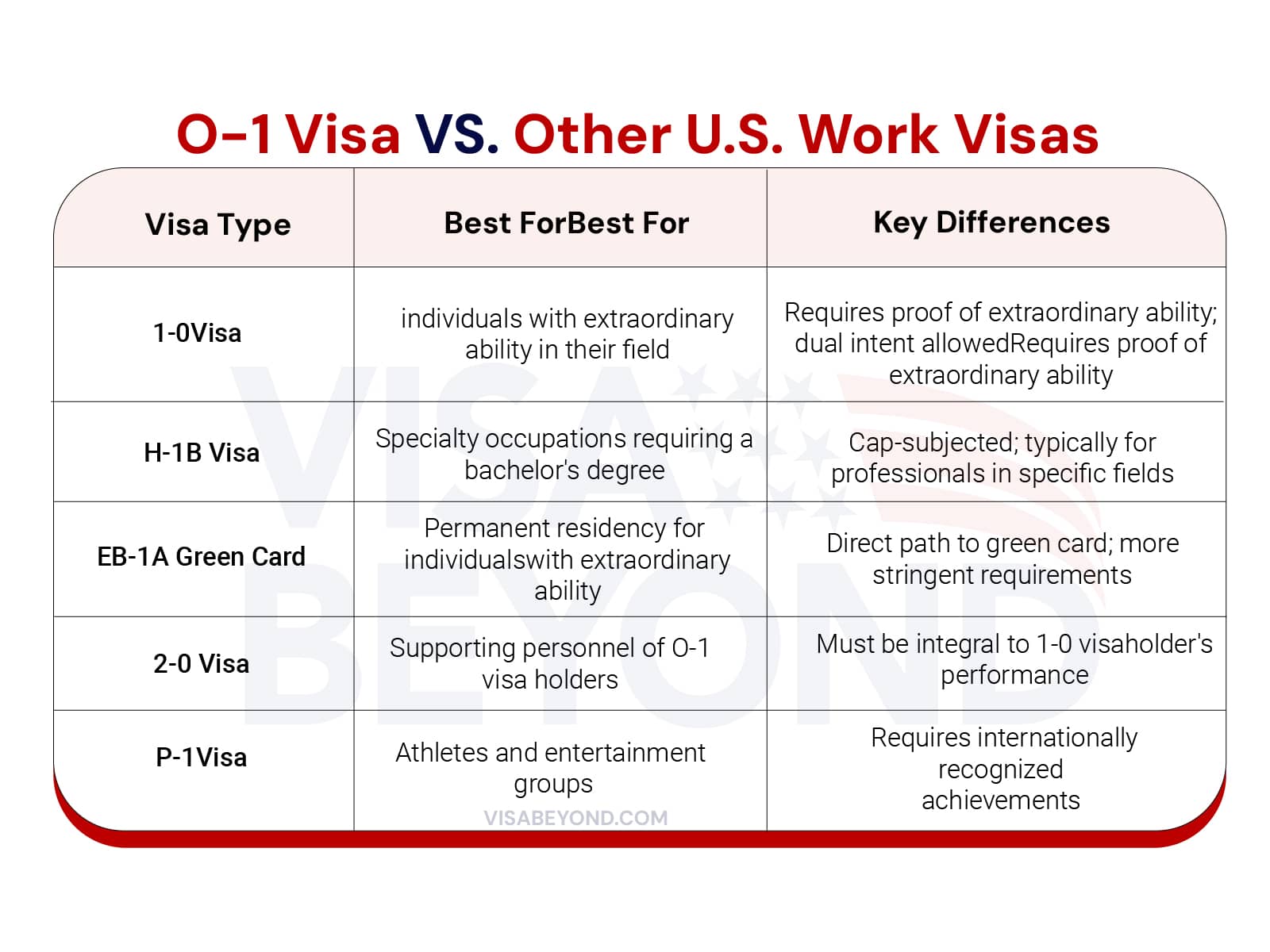
O-1 Visa to Green Card
Transitioning from an O-1 visa to a green card is a significant step toward achieving permanent residency in the United States. The O1 visa, known for its “dual intent,” allows visa holders to pursue a green card without jeopardizing their nonimmigrant status. Here’s how to navigate this pathway effectively.
Dual Intent and O1 Visa
The concept of dual intent allows O-1 visa holders to apply for a green card without risking their visa status. This means you can legally intend to become a permanent resident while maintaining your status. Navigating the process involves careful planning, including filing Form I-140 for an immigrant petition and possibly adjusting status or going through consular processing.
How to Maintain O-1 Visa Status While Pursuing a Green Card
While applying for a green card, it’s crucial to maintain your O-1 visa status. Continue fulfilling the conditions of your O-1 employment, such as working in your extraordinary field and adhering to visa terms. Ensure that your status remains valid throughout the green card process to avoid complications.
O-1 Visa for Dependents
An O1 visa not only opens doors for the visa holder but also offers significant benefits for family members through the O-3 visa. This visa allows spouses and children to join you in the U.S. and enjoy a range of benefits.
Bringing Your Family to the U.S. on an O-1 Visa
The O-3 visa is designed for the spouses and unmarried children under 21 of visa holders. It allows your family to live in the U.S. for the duration of your O1 visa, providing them with opportunities to study and experience life in the U.S. alongside you.
Who is Eligible for the O-3 Visa?
Eligibility for the O-3 visa is limited to:
- Spouses: Legally married partners of O-1 visa holders.
- Children: Unmarried children under the age of 21.
Each O-3 visa holder must apply individually, with proof of relationship to the O-1 visa holder, such as marriage and birth certificates.
Benefits of the O-3 Visa
The O-3 visa offers several benefits:
- Residency: Live in the U.S. for the same period as the O1 visa holder.
- Education: Access to U.S. public and private schools, including universities.
- Travel: Freedom to travel in and out of the U.S. during the visa’s validity.
Educational Opportunities for O-3 Visa Holders
O-3 visa holders can enroll in U.S. educational institutions at all levels, from primary school to university. This offers a unique opportunity for children to receive a high-quality education and for spouses to pursue further studies.
Exploring Work Opportunities
Unfortunately, O-3 visa holders are not eligible for work authorization in the U.S. If a spouse or child wishes to work, they must change their status to a work-eligible visa, such as H-1B or E-2, depending on their qualifications and job offer.
How to Change Status from O-3 to a Work-Eligible Visa
Changing from O-3 to a work-eligible visa requires:
- Job Offer: Secure employment that qualifies for a work visa.
- Petition: The employer files a petition for the appropriate work visa (e.g., H-1B).
- USCIS Approval: Wait for USCIS to approve the petition before beginning work.
Let’s Make Your U.S. Dreams a Reality.
Traveling In and Out of the U.S. on an O-3 Visa
Travel is an integral part of life on an O-3 visa. Understanding the rules and requirements for re-entry is essential to avoid issues when returning to the U.S.
Maintaining O-3 Visa Status During Extended Travel
Extended travel outside the U.S. can affect your O-3 visa status. Ensure that your visa remains valid and that you maintain ties to the U.S., such as a permanent address, to avoid complications upon re-entry.
Re-entry to the U.S. on an O-3 Visa
When re-entering the U.S. on an O-3 visa, you must present:
Valid O-3 Visa :
Ensure your visa is up to date.
Passport :
Must be valid for at least six months beyond your intended stay.
Proof of Relationship :
Carry copies of your marriage or birth certificates.
I-797 Approval Notice :
For the O-1 visa holder, if applicable.
These documents will help ensure a smooth re-entry process.
O-1 Visa Alternatives
This visa is a powerful option for those with extraordinary abilities, but it’s not the only path to working in the U.S. If the O1 doesn’t fit your situation, or if you’re exploring other possibilities, there are several alternatives to consider.
What Are the Alternatives to the O-1 Visa?
There are various U.S. work visas that might be suitable depending on your professional background, skill level, and long-term goals. Some key alternatives include:
- H-1B Visa: For professionals in specialty occupations.
- L-1 Visa: For intracompany transferees.
- E-2 Visa: For investors from treaty countries.
- EB-1 Visa: For those with extraordinary abilities, similar to O-1, but for permanent residency.
Each visa has its own set of criteria and benefits, so it’s crucial to understand which one aligns best with your career aspirations.
H-1B Visa vs. O-1 Visa
Choosing between the H-1B and O-1 visas depends on your qualifications, job offer, and long-term goals. Here’s a breakdown to help you decide:
Key Differences Between O-1 and H-1B Visas
- Eligibility:
- H-1B: Requires a job offer in a specialty occupation and at least a bachelor’s degree.
- O-1: Requires extraordinary ability in specific fields; no degree required.
- Cap and Lottery:
- H-1B: Subject to an annual cap and lottery.
- O-1: No cap; available year-round.
- Duration:
- H-1B: Initially up to 3 years, extendable to 6 years.
- O-1: Initially up to 3 years, with unlimited extensions in 1-year increments.
- Dual Intent:
- H-1B: Allows dual intent.
- O-1: Allows dual intent as well.
O-1 Visa vs. O-2, P-1, and Other Nonimmigrant Visas
If you’re considering other nonimmigrant visas, it’s important to understand how they compare to the O1 visa:
- O-2 Visa: For support personnel of O-1 visa holders; only available if you’re assisting an O-1 visa holder.
- P-1 Visa: For internationally recognized athletes or entertainers; more focused on team or group achievements rather than individual acclaim.
- E-2 Visa: For investors; requires significant capital investment in a U.S. business.
Each visa serves a unique purpose, so the best choice depends on your specific role and goals in the U.S.
Comparing O-1 Visa with EB-1 Visa
While the O-1 visa is for temporary work, the EB-1 visa offers a path to permanent residency. Here’s a comparison:
- O-1 Visa: Nonimmigrant, for temporary work; can lead to EB-1 for permanent residency.
- EB-1 Visa: Immigrant visa; offers a direct path to a green card for those with extraordinary abilities.
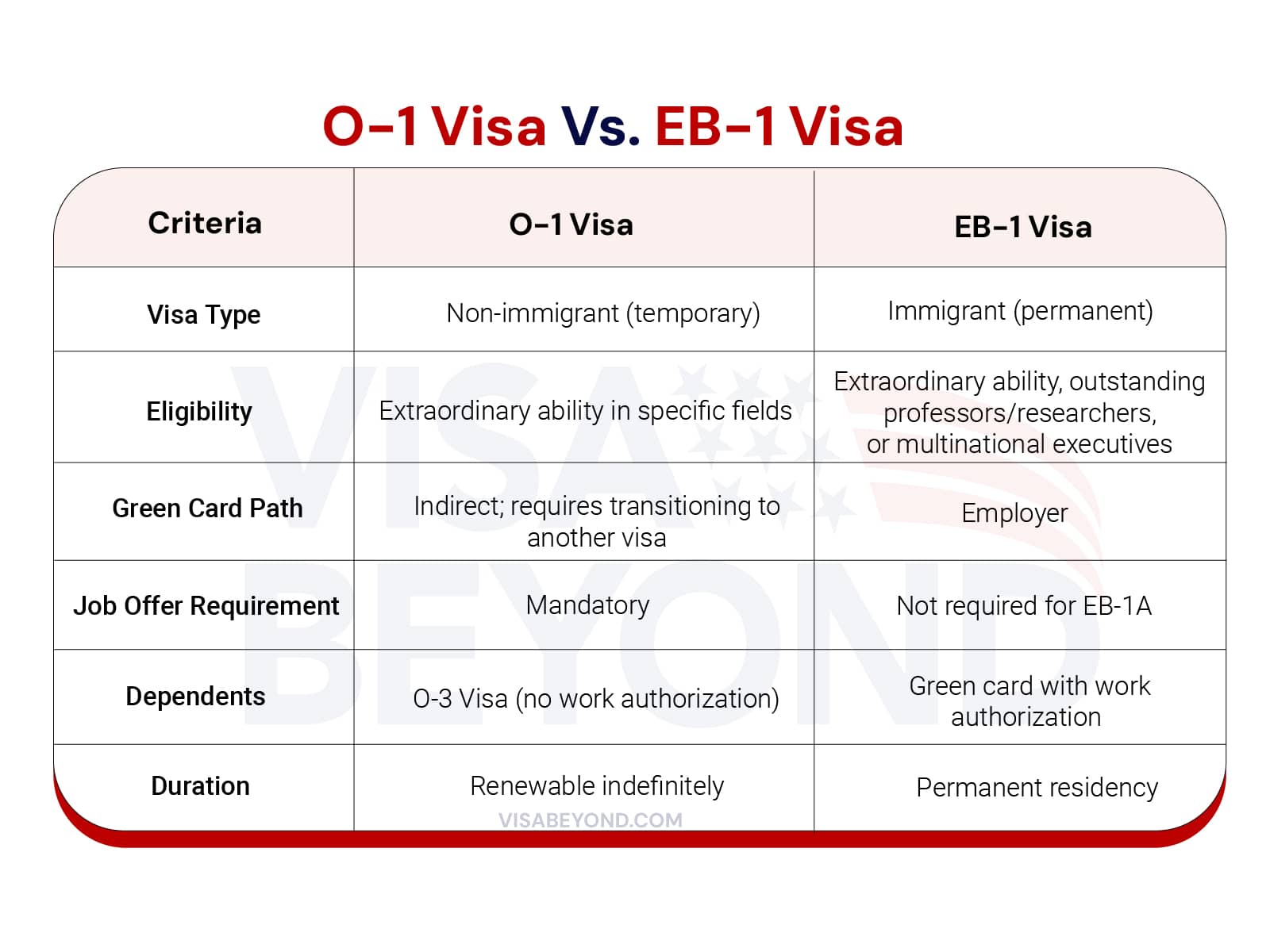
Final Thoughts: Successfully Navigating the O-1 Visa Process
The visa process can be complex, but with the right preparation, it can be a powerful tool for advancing your career in the U.S.
Long-Term Career Opportunities for O-1 Visa Holders
As an O1 visa holder, you’re in a prime position to explore long-term career opportunities in the U.S. Whether you plan to transition to a green card or leverage your extraordinary abilities across different industries, the O-1 visa offers a flexible and prestigious foundation for your professional growth.
Seeking Professional Help
Navigating the O1 Visa process can be complex and challenging. Here are some key reasons why seeking professional consultation is essential:
Expert Guidance :
Immigration attorneys and consultants have extensive knowledge of the visa process and can provide expert advice tailored to your specific situation.
Document Preparation :
Professionals can help you gather and organize the necessary documentation, ensuring that your application is thorough and complete.
Understanding Criteria :
Consultants can clarify the eligibility criteria and help you understand what qualifies as extraordinary ability, making it easier to present a strong case.
Avoiding Mistakes :
Errors in your application can lead to delays or denials. Professional guidance helps you avoid common pitfalls and mistakes.
Personalized Strategy :
Each applicant’s situation is unique. Professionals can develop a personalized strategy to highlight your strengths and achievements effectively.
Legal Support :
In case of any legal issues or complications, having an attorney can provide the necessary support and representation.
Latest News.
From the blog
"*" indicates required fields
